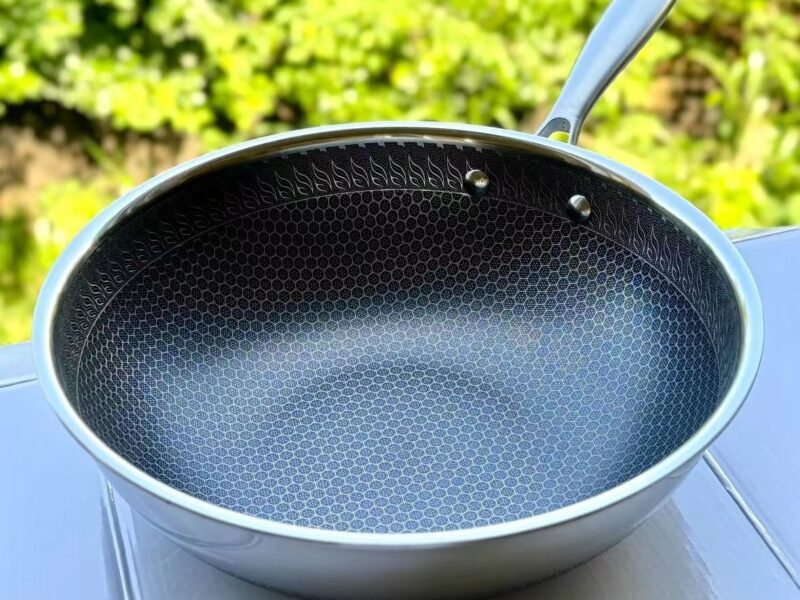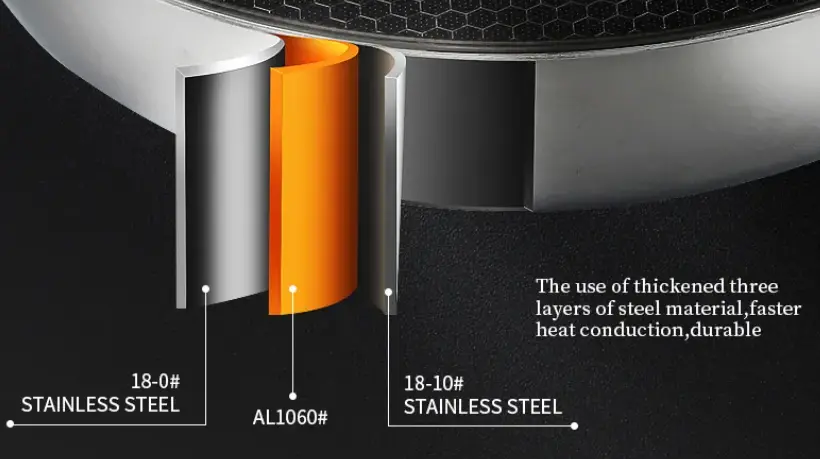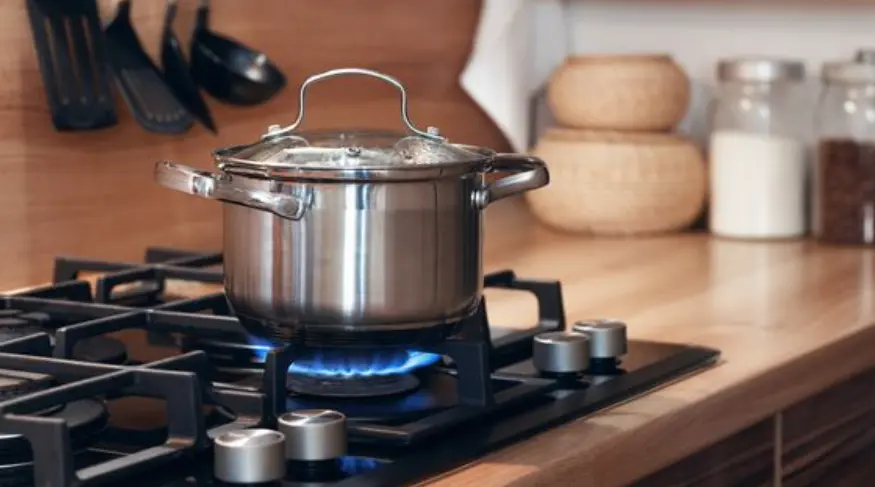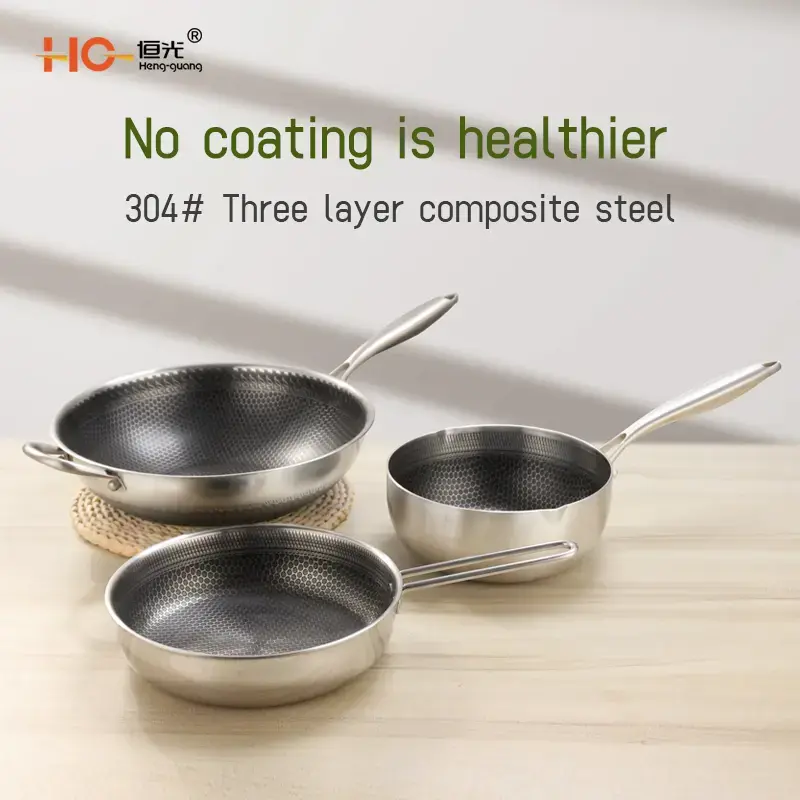
What Is Tri Ply Stainless Steel
In recent years, tri ply composite stainless steel cookware has ascended to an ideal status for both home and commercial culinary environments, attributable to its notable properties. The architecture of this cookware amalgamates the merits of stainless steel with aluminum. Typically, this tri ply stainless steel cookware comprises an inner and outer stratum of stainless steel, sandwiching a middle layer of aluminum or copper alloy. This layered configuration accomplishes superior thermal conductivity and enhanced durability, with the innermost stainless steel layer maintaining direct food contact—ensuring it is non-toxic and harmless. Such a design not only augments thermal conductivity, promoting more uniform heat distribution, but also preserves the robustness and corrosion resistance characteristic of stainless steel.

Safety Analysis of Tri Ply Stainless Steel Cookware
Stainless steel itself is a highly stable material, widely used in medical devices and food processing equipment, ensuring that it does not release harmful substances at high temperatures. The inner layer of stainless steel used in tri ply composite stainless steel cookware is usually food-grade 304 or 316 stainless steel, which has good corrosion resistance and safety. It will not react with acidic or alkaline foods during use, and will not change the taste of food or affect its nutritional content.
Although aluminum may pose health risks, in the tri ply stainless steel structure, the aluminum layer is completely covered by stainless steel, so there is no need to worry about the health problems caused by aluminum contact with food.

Impact Of Use And Maintenance On Safety
Although tri ply stainless steel cookware is safe and reliable in terms of material, proper use and maintenance are equally important. Tri ply stainless steel cookware has excellent thermal conductivity, so there is no need to use high temperatures for a long time when cooking. Improper use, such as long-term dry burning or high-temperature heating beyond the heat-resistant range, may cause the cookware to deform or damage, which in turn affects its service life and safety. It is recommended to use medium and low heat during cooking, which not only saves energy but also extends the service life of the cookware.
In addition, using sharp tools to scratch the inner surface or soaking in strong acid and alkali solutions for a long time may also damage the stainless steel layer. Although stainless steel itself is corrosion-resistant, long-term improper handling may still cause problems. Regular inspection is also an important measure to ensure the safety of tri ply composite stainless steel cookware. During use, the various parts of the cookware should be checked regularly to ensure that there is no looseness or damage.

Conclusion
To sum up, tri ply stainless steel cookware is safe and reliable in terms of material design, but users still need to pay attention to regular inspection and maintenance and reasonable cleaning and care during use to ensure its long-term safe use. By mastering these skills, you can not only fully enjoy the superior cooking performance brought by tri ply composite stainless steel cookware, but also protect the health of your family and yourself.

